Monday 20th February Krabi to Koh Dam Hok
We had to wait until the tide was right before leaving Krabi so it was late afternoon when we got to the fuel dock to refill for the passage. Anyone fed up with me relating how hot it is yet? Well…it was hot and very humid too so once we were out of the river and back out on the shallows it was such a tonic to feel the sea breeze on our skin. The mudbanks were much more visible on the return trip but Paul was more confident this time and we made it across much quicker, with no threat of going aground. Paul chose a great place to stop for the night, just as the light was beginning to fade. Several mooring buoys were available near the small, charming island of Koh Dam Hok. Through the binoculars I could make out a long strip of white sand and what might be a ranger’s hut. A few longtail boats were anchored near it but it clearly wasn’t the busy thoroughfare for marine traffic we’d experienced at Ao Nang, which we could see lit up in the distance. I picked up a mooring buoy (have I mentioned that I can do this pretty skilfully now ;)) and we were securely tied on to it before sundown – in fact we sat on deck in the cool evening air to watch the sun set and as it was such a clear night we lingered up there until it was full dark, enjoying the peace and the starlit sky… such are the simple pleasures of this sailing life 🙂


Tuesday 21st February Koh Hong
The security of the mooring buoy and the serene location proved to be ideal conditions for a deeper and longer sleep. However, I was glad to be up in time to see the sunrise when Koh Dam Hok was revealed in all its glory: shades of green from the dense forest behind the spotless white sand, a turquoise sea and a clear blue sky, were all enhanced by the pinkish early morning sunlight. I could have admired it for ages. Paul went for a swim after breakfast to check the condition of the hull and we slipped our mooring at 10 o’clock to journey to Koh Hong. We were able to have the sails up for a while during this passage, although it’s never long before they start flapping and the engine is turned on again. I keep forgetting to mention that the fishing line is usually trailing behind us on these trips (once, it even caught a juicy bit of seaweed).

At 1 30 we arrived at Koh Hong and after sussing out that there were once again plenty of free mooring buoys, we motored around the triangular-shaped island for a better look at it. One side was quite lively: two long beaches with lots of day visitors and associated longtail boats. The water was busy with divers, swimmers, snorkelers and kayakers. Round the corner was a smaller, more peaceful beach with fewer vessels so that’s where we (I) picked up a mooring buoy after we’d been round the whole coastline. This is flagged as another ‘must see’ Hong and it was easy to see why. The binoculars showed steep, rust-coloured stripy cliff sides, surreal rock formations, sea caves and intriguing creeks and inlets. Add to those the gorgeous beaches, lush vegetation and the awe-inspiring Hong itself, and this Hong’s got the lot! The day visitors begin to leave from about 4pm so we waited until 4 30 for our dinghy trip. Our first stop was a cave behind the trees on the beach which could have come straight out of the kind of Enid Blyton adventure stories I devoured as a child. It was dark and eerie inside. I couldn’t see any bats – lots of stalactites and stalagmites and dark corners dripping with water though. Paul went further in but it didn’t lead to another Hong so we left and dinghied round the corner to the main one.
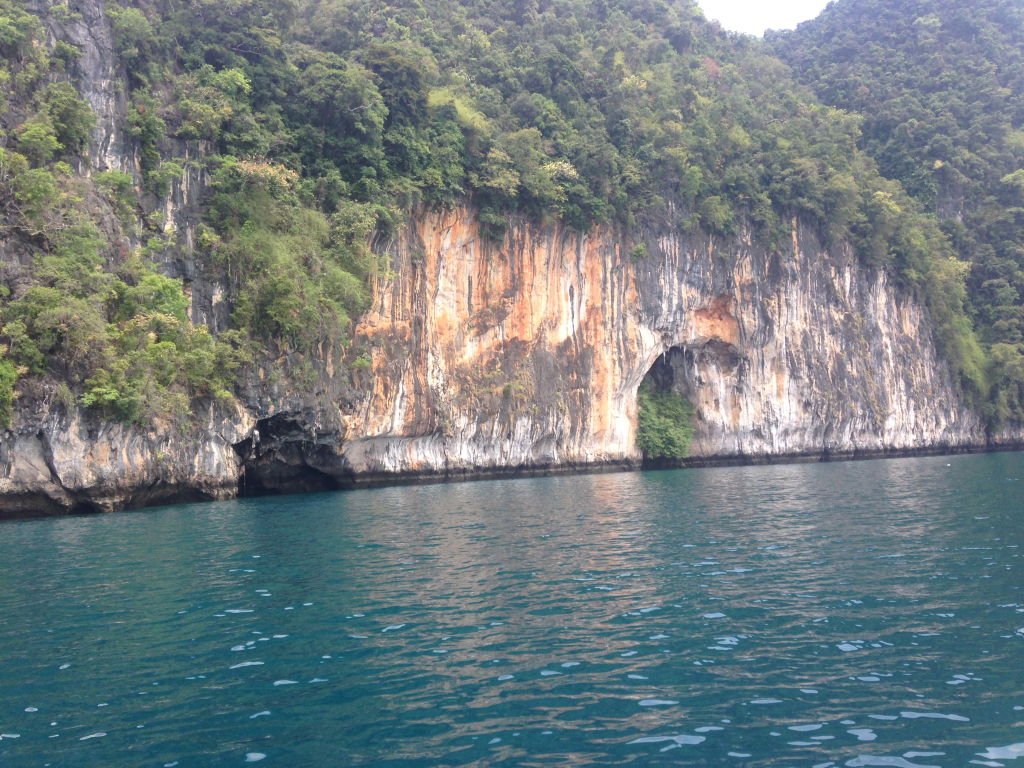
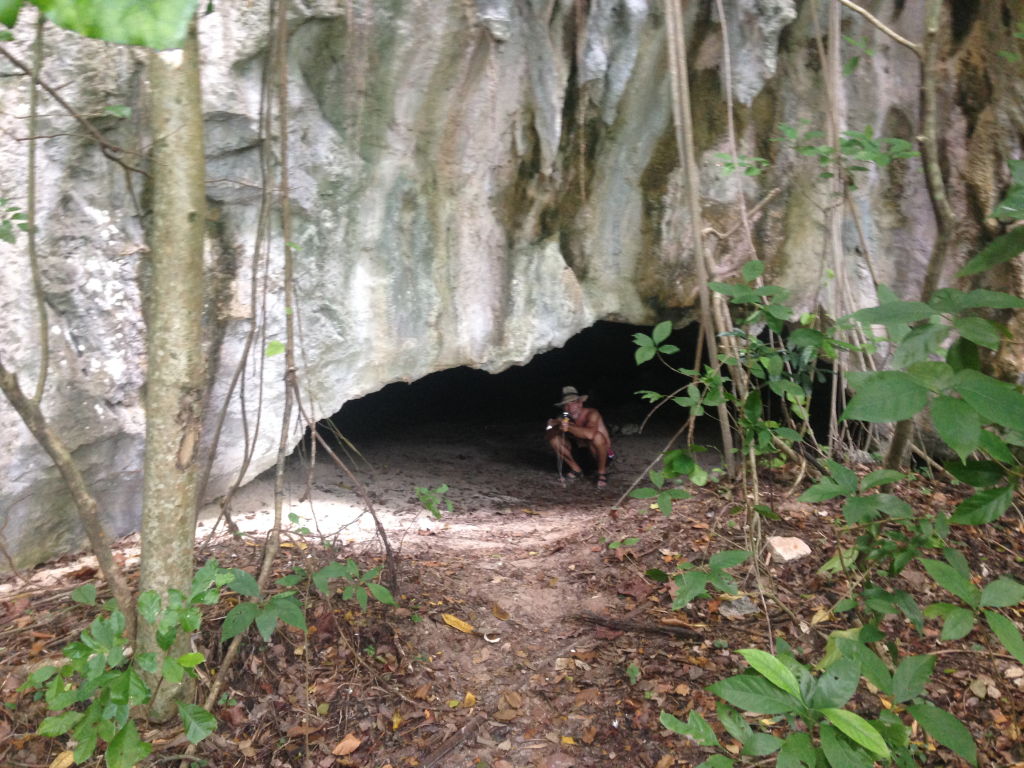
Taking the dinghy into the Hong’s lagoon was delightful (to begin with). It’s huge, and I kept seeing beautiful blue birds flying off the branches of the trees on the sides of it. My mission then was to get a picture of one of them. Part of the enjoyment of being inside a Hong is the tranquil setting, the bird calls, spotting wildlife and taking in all the nature on display. The general advice is that outboards should be turned off when inside in order not to disturb the wildlife and to respect the surroundings. It’s nice to row around it in a leisurely manner anyway. Pictures from inside Koh Hong below.
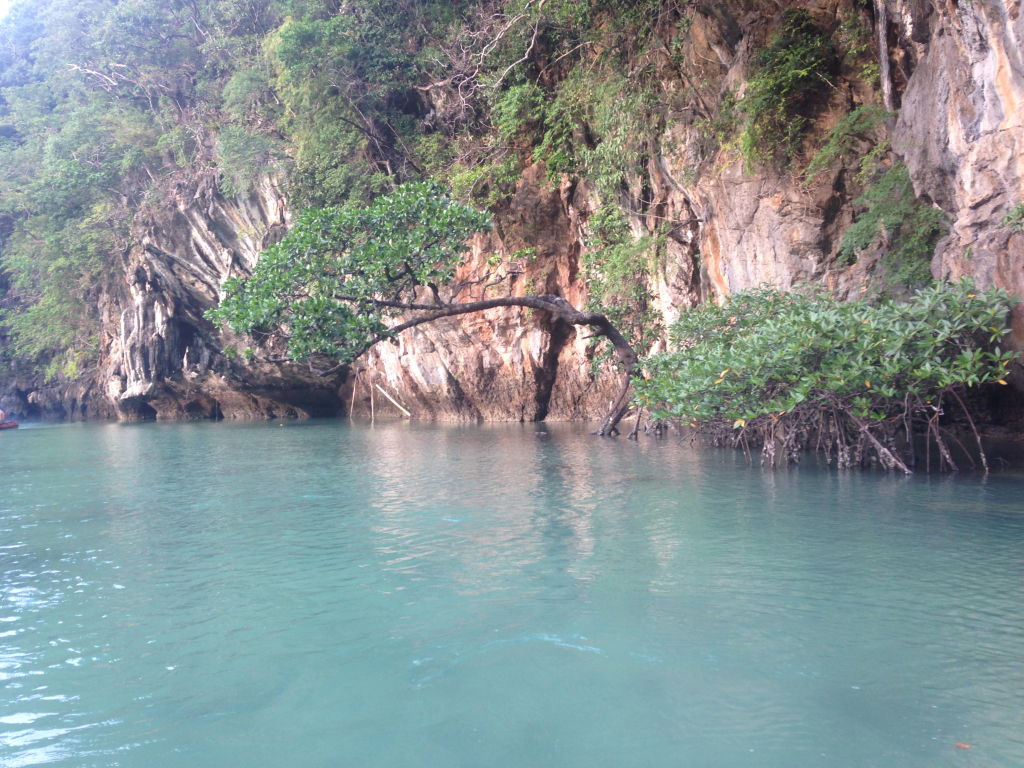
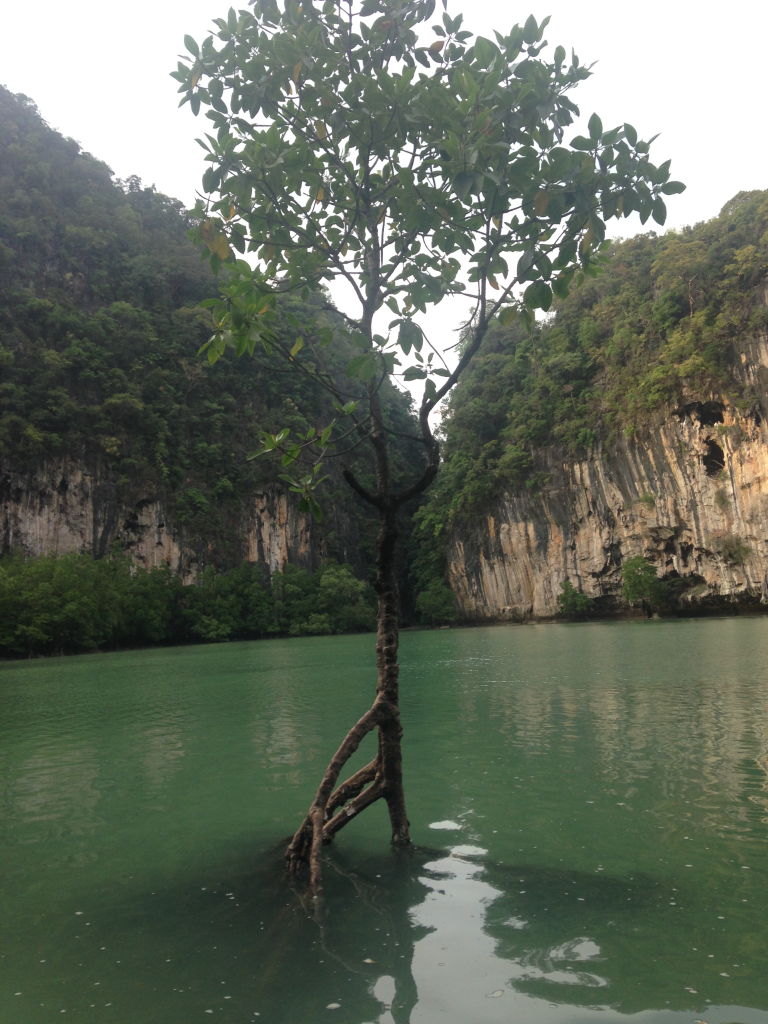

Unfortunately, despite almost having it to ourselves, we were subjected to calls and screeches of a human kind when a motorboat carrying about a dozen tourists (either French or Russian) entered the lagoon and began whooping and cheering and jumping in the water, and then compounded the rudeness by playing loud, ghastly Eurotrash music. I was seething with indignation and would have loved to let them know how ill-mannered they were (I tend to go into grumpy old woman mode a lot more frequently these days ;)). Anyway I know it wouldn’t have done a lot of good to confront them. I did manage to get a picture of one of the pretty blue birds on our way back to the boat though (it can just about be seen).


Wednesday 22nd February Koh Roi
It’s a smoother and faster exit from a mooring buoy and not having to flake the anchor frees me up to get things tidied and sorted below. It doesn’t take long for the cabin to get cluttered and for items to go astray if the rule of ‘a place for everything and everything in its place’ isn’t adhered to :). We also need to keep up with charging phones and various other devices so we make the most of the power inverter while the engine is running. Up above, scenes straight out of the glossy pages of travel brochures were coming into view on the port side: golden beaches and palm trees with luxury holiday accommodation nestling in the jungle-like forest. There is nothing garish about these resorts, the buildings blend in with the surroundings and they are designed so that it never becomes too crowded.




We arrived at Koh Roi at about 2pm and decided we would visit this Hong earlier. From our anchorage we could see the arched, cave-like entrance to the Hong and looking through the binoculars I could see that people were stooping underneath it to get in. Paul checked the tides and worked out that 3 30 would be a good time to visit. As luck would have it, it looked as if the beach was deserted as we approached on the dinghy. Looking around me I was struck by the sheer beauty of our surroundings. It’s hard to describe in words, I think the pictures convey it well, but it’s the very size of the rocks, and their solid, molten shapes that look almost too crafted to be natural that inspire such awe. Travel writer Thomas Swick sums it up well in an excerpt from his book, The Joys of Travel: And Stories That Illuminate Them:
No technology can replace the visceral experience of arriving in a new place, the moment when you step out of an airport, or off a ship, and subject yourself—body, mind and heart—to a strange land. You’re attuned to everything: the sights, the sounds, the smells, the textures, very soon the tastes.

Leaving the dinghy on the beach we headed straight for the cave, sweating profusely from the heat and humidity and when we stepped into that Hong I did indeed subject myself body, mind and heart to the strange environment before us. The first thing that hit me was how gorgeously cool it was in the dim cavern after the searing heat. Then I noticed the mangrove trees, their dry roots on show without the water we usually see covering them. I was aware of screeching noises and assumed they were birds or monkeys. I kept looking down to paddle my way through the shallow, murky pools of water we had to negotiate to get further in.




When I looked up the sight that met me was one of the most amazing things I’ve ever seen. The noise we heard came from bats – the fruit bats I had been so keen to spot, and there they were in the tall trees in the Hong, hundreds of them. Hanging upside down from the branches, their black wings were either wrapped around their bodies cocoon-like or stretched out as they opened them one at a time, but it was their dark beady eyes that fascinated me. Like portraits hanging on walls in stately homes where the eyes appear to follow you, each bat I looked at seemed to be staring back at me. The noise was deafening as we went further in. Strangely, it built up to reach a crescendo and then gradually subsided until it was almost silent before slowly building up again. I could have stood there for hours looking up into their cute furry faces. Picking our way over the rock strewn floor with its gnarled and tangled tree roots and swampy mud, this Hong was like a Gothic grotto, complete with a colony of bats. It wouldn’t have looked out of place in scenes from Harry Potter or Lord of The Rings. I loved it! More pics below but unfortunately the bats didn’t photograph very well.



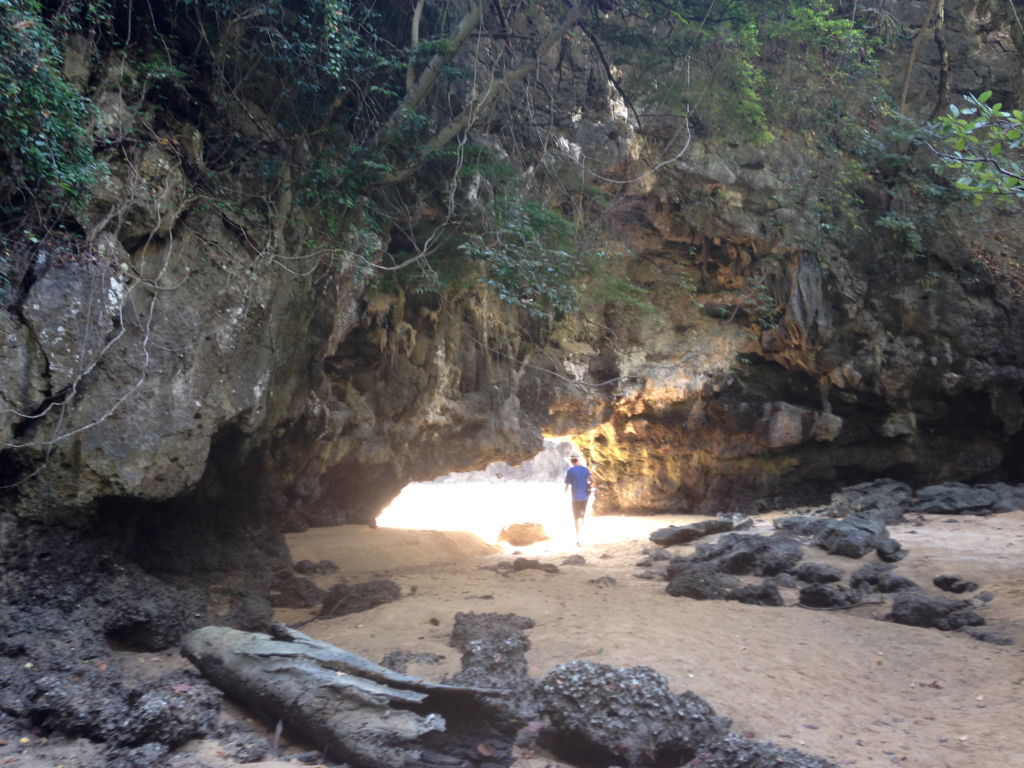


Back onboard, we sat at the bow watching the people from the two catamarans that had anchored near us, swimming over to the Hong as the sun set. By then, the tide was in so far that it was impossible to see the arched entrance, but I could still hear the bats clearly.
